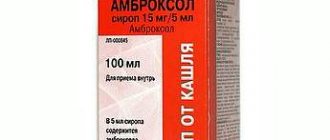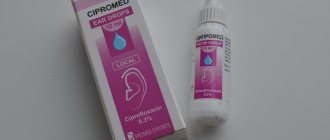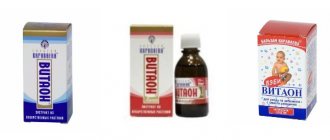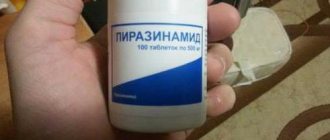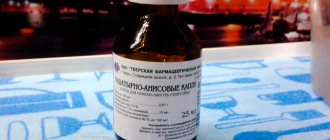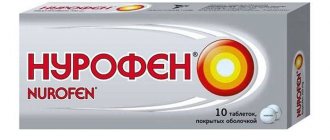Release form
Thanks to the different forms of release of ambroxol, you can choose a convenient way to give medicine to both a small child and an adult who does not want to attract the attention of others to his illness.
Ambroxol solution
The release form is convenient because it can be masked in any drinks. The only condition is that they should not be too hot. Ambroxol solution is also used for inhalation. A compressor nebulizer, ultrasonic or MESH inhaler is suitable for the procedure. Do not use steam devices: if heated too much, ambroxol is destroyed. But before use, warm the solution to body temperature, so it will be better absorbed. Before inhalation, the solution is mixed with isotonic (0.9%) sodium chloride solution. You can heat it up in any convenient way, even in a microwave oven. Saline solution for external use can be prepared at home. For 10 parts of boiled water, take 1 part of table salt and dissolve well. The solution can only be used for rinsing and inhalation.
Ambroxol syrup
Allowed from the first days of life. Available in dosages of 3 or 6 mg/ml. Pay attention to this when purchasing: the amount of the drug that needs to be given to the child depends on the dosage. Excipients: benzoic acid, glycerol, hyaetellose, sorbitol, propylene glycol, levomenthol, water. Sorbitol is not a sugar, so it is allowed for diabetes and other carbohydrate metabolism disorders.
Ambroxol tablets
They are only available in 30 mg dosages, but they can be broken up and taken as half a tablet. Contains lactose monohydrate and corn starch. The first of them is prohibited for lactose deficiency. Starch is broken down into glucose by digestive enzymes. It is used with caution in diabetics, and it is better to use other forms of ambrohexal.
Ambroxol lozenges
Ambroxol is rarely produced in this form, and is found in pharmacies even less often. The content of the active substance in one lozenge is 15 mg, a full child dose or half an adult dose. It contains saccharin as a sweetener, which means they are suitable for diabetics, but the composition contains essential oils of peppermint and eucalyptus, which may cause an individual reaction.
Soluble tablets
Available in dosages of 30 and 60 mg. A single dose of ambroxol 60 mg is rarely prescribed and should be used under the supervision of a physician, but it is acceptable to break the tablet in half, which may reduce the cost of the course. Saccharin and aspartame are used as sweeteners. Both are possible for patients with impaired absorption of any fast carbohydrates.
pharmachologic effect
Ambroxol thins mucus and helps cough it up. It chemically changes the structure of bronchial secretions, increasing its fluidity. The effect is enhanced by increased mucus production, which physically dilutes phlegm. The drug increases the activity of the cilia of the respiratory tract epithelium, which are responsible for the evacuation of excess mucus. In neonatology, an important property of ambroxol is its ability to enhance the production of surfactant. The body produces this substance to protect the smallest components of the lungs - the alveoli. Ambroxol saves the lives of newborns, especially premature infants, who may develop non-cardiogenic pulmonary edema due to a lack of surfactant.
Pharmacodynamics and pharmacokinetics
The effect occurs, depending on the form of the drug, after 10-15 minutes when administered intravenously and inhaled, after 30 minutes when taken orally.
Absorption and binding to blood proteins when taken orally is more than 90%. Conversion to inactive metabolites, which are 90% excreted in the urine, occurs in the liver. 5% of the drug leaves the body unchanged. The drug is excreted more slowly if the kidneys are severely impaired. The condition of the liver does not affect this indicator.
At what age can children use Ambroxol?
The age at which children can take Ambroxol should be clarified in the official instructions, since it may differ depending not only on the form of the drug, but also on the manufacturer. For example, syrup produced by Ekolab CJSC is contraindicated for children under 3 years of age, and produced by Tatkhimfarmpreparaty OJSC has no age restrictions.
Side effects
When taking the drug orally, stool disorders occur in rare cases. If you take the drug for a long time and in large quantities, symptoms of gastritis may develop: abdominal pain, heartburn, nausea.
Allergic reactions usually manifest themselves dermatologically, angioedema occurs infrequently, anaphylactic shock occurs in isolated cases.
In rare cases, other side effects occur: weakness and pain in the head, lack of urination, dry mucous membranes.
When quickly administered into a vein, blood pressure decreases, resulting in severe headache, decreased body temperature, shortness of breath, and chills.
Adverse reactions and overdose
Side effects after taking the drug appear extremely rarely. Ambroxol has no toxic effect and is well absorbed in the human body.
In rare cases, skin problems may occur, manifested by a rash, as well as allergies, angioedema, lethargy and headache.
When taken simultaneously with incompatible drugs, isolated cases of severe skin lesions have been recorded.
In case of overdose, the patient experiences vomiting, nausea, and diarrhea. If such symptoms appear, you need to induce vomiting and rinse the stomach as quickly as possible. Then for a couple of days you need to eat food that contains fats.
Directions for use and dosage
The drug is taken orally after meals to reduce irritation of the gastrointestinal tract. Tablets and syrups are washed down with any liquid.
Important! A single dose for patients over 12 years of age, including adults, is 30 mg; children from 6 to 12 years old take 15 mg at a time. For younger children, a single dose is calculated by the pediatrician.
It is recommended to take the drug 2-3 times a day. Per day, the maximum dose for patients over 12 years of age, including adults, is 90 mg (3 times x 30 mg), for children 6-12 years old - 45 mg (3 times x 15 mg), for children 2-6 years old - not more than 22.5 mg, and for children under 2 years old - no more than 15 mg per day.
The course of treatment lasts from 3 days to 2 weeks, but if you start taking it on your own, and the illness does not get better in the first 2-3 days, you need to consult a doctor: most likely, the treatment needs to be supplemented.
For dry cough
Dry cough is a direct indication for the use of ambrohexal. But for a wet cough with sufficient sputum discharge, this drug is not needed.
Contraindications
Ambroxol should not be taken by people who have hypersensitivity to at least one component of the drug. Women in the first trimester of pregnancy should avoid taking it.
The drug in tablet form should not be used by people with stomach and duodenal ulcers, as well as in cases of epileptic syndrome.
Other contraindications include hereditary fructose intolerance. The medicine should not be taken for a dry cough that occurs with colds and viral diseases.
During pregnancy and breastfeeding
The effect of ambroxol on the fetus has not been studied. It is only known that the substance penetrates the hemoplacental barrier. Therefore, in the first trimester the drug is prohibited, and in the second and third trimester it is used with caution, although no negative consequences for the fetus were detected when treated with this drug.
Important! The only case when ambroxol is directly indicated during pregnancy and is administered to women in high doses is when there is a threat of premature birth. One of the effects of ambroxol is to increase the production of surfactant, a substrate that protects the baby's lungs from collapsing. The respiratory system of premature babies is not ready for independent breathing, and they have very little surfactant. In this case, the property of ambrohexal to penetrate the placenta works to the benefit of the child: the mother receives the infusion, and the lungs of the unborn baby are protected.
If it is necessary to take ambroxol during lactation, it is recommended to interrupt breastfeeding. Although, according to modern data, the drug passes into breast milk in small quantities, and in addition, is indicated for sick children from the first days of life, doctors rightly prefer not to take risks: the drug also has side effects, and the mucolytic effect can be harmful to a healthy baby .
Admission rules
The active properties of ambroxol hydrochloride begin to appear 30 minutes after entering the body. The duration of the therapeutic effect is at least 10 hours. This means that Ambroxol is a long-acting drug. This statement applies equally to tablets, syrup, and other dosage forms.
Ambroxol is a long-acting drug
Taking mucolytics should be accompanied by a large amount of fluid entering the body in the form of clean water, tea, fruit drinks or compotes. When diagnosing bronchial asthma, it is recommended to use Ambroxol before inhaling the drug.
Caution should be exercised when administered intravenously. If the drug enters the body too quickly, the patient experiences a state of chills, frequent fluctuations in body temperature with a predominant increase in indicators, shortness of breath, and increased blood pressure. There are facts when taking Ambroxol tablets or syrup caused severe headaches and a feeling of numbness.
The facts described above indicate that the use of the drug should be as careful as possible. Carefully reading the instructions and following the dosages recommended by the doctor is a guarantee of maintaining the patient’s well-being and the effectiveness of the prescribed therapy.
Drug interactions
Ambroxol, like other mucolytics, should not be used together with cough suppressants. This combination disrupts the natural mechanism for sputum evacuation.
For pulmonary diseases, it increases the therapeutic effect of amoxicillin, cefuroxime, erythromycin and doxycycline due to the fact that, thanks to ambroxol, they better penetrate the bronchial secretions.
Ambroxol or Bromhexine, which is better?
In terms of indications and effectiveness, these are similar drugs. Both of them are inexpensive. But bromhexine is a prodrug, and ambroxol is an active drug.
Bromhexine itself is inert; it is activated after the first metabolization in the liver, which turns it into ambroxol. This delays the onset of the maximum effect of Bromhexine by 1.5-3.5 hours compared to ambroxol, but since the drug is not emergency, such a delay is not of great importance.
The main difference between these drugs is the release form. Bromhexine is available in tablets and capsules, and therefore can only be used by children over 3 years of age. Ambroxol, due to its wide range of release forms, and specifically the presence of the drug in the form of syrup, can be used from the first days of life.
special instructions
To purchase medicine at a pharmacy you do not need a doctor's prescription. Shelf life – 3 years. Do not use after expiration date. Store at room temperature.
When using mucolytic drugs, it is advisable to drink as much liquid as possible: tea, compote, juices.
Patients with bronchial asthma should take a bronchodilator before inhalation to prevent irritation of the respiratory tract.
Taking tablets and syrup in parallel with antibiotics increases the content of the active component of the latter in the lung mucosa, which has a positive effect on the patient’s condition.
Frequently asked questions to the doctor
I was scared that ambroxol could cause hilar pneumonia. Is it so?
The main effect of ambroxol is mucolytic; it makes viscous mucus liquid, which makes it easier to cough up. But, of course, the liquid secretion flows down more easily, obeying the action of gravity. If a person is awake, he will reflexively cough up secretions, but in a dream it is more difficult to do this. Therefore, it is not recommended to take ambroxol less than 4 hours before bedtime, and prolonged forms of the drug are taken in the morning. If the drug is used incorrectly, complications occur, but are rare.
.
Lazolvan has always helped me, I don’t trust ambroxol, it’s cheap
Price is not an indicator of the quality of a medicine. In Russia, all medicines must undergo the same examination, which confirms their safety and compliance of the composition with what is stated in the instructions. That is, both the expensive “Lazolvan” and generics called “Ambroxol” must have an identical composition.
The abundance of documents that a drug must receive before entering the pharmacy makes it much more difficult for counterfeit products to enter the market. However, drugs continue to be counterfeited. Most often, expensive drugs or the most popular ones are falsified.
To minimize the likelihood of purchasing a counterfeit, buy medications from large pharmacy chains and choose manufacturers with a good reputation.
Dry cough: why Ambroxol does not help
The cause of a dry cough can be not only low rheology of sputum, but also the localization of inflammation. If the cough occurs due to damage to the tonsils, the removal of sputum from the bronchi will not affect the course of treatment in any way. This is why pharyngitis is not an indication for the use of ambroxol.
An irritating cough caused by inflammation of the nasopharynx, pharynx and larynx cannot be cured with ambroxol. To get rid of infection of the upper sections, it is better to use antiseptic rinsing solutions or in the form of lozenges for resorption.
Ambroxol price
A 100 ml bottle of syrup containing ambroxol in an amount of 3 mg/ml (or 15 mg/5 ml, this is the same) under most trade names, from ambroxol to Ambrobene, can be purchased for about 100 rubles. “Lazolvan” in the same volume is twice as expensive; for the same money you can buy “Ambrobene” in a dosage of 6 mg/ml. “Lazolvan” in the same dosage will cost 262 rubles, and in this case the difference in cost is small.
Tablets of 30 mg from most manufacturers, packaged 20 per pack, cost 109-150 rubles.
Other dosage forms that contain ambroxol will cost about the same.
Reviews
I am a pediatrician and widely use ambroxol in my work. Conveniently, the medicine can be prescribed in different forms, including inhalation and even intravenously. I rarely observe side reactions, and to remove them, sometimes it is enough to change the form, for example, replacing tablets with inhalations. In the future, I would like to see a drug without flavoring: it is possible that this would further reduce the frequency of allergic reactions, which are practically not observed with intravenous administration.
Great tablets for children! But they work worse if you forget to give your child something to drink. It is logical that since they thin the mucus, additional water is needed. But with plenty of warm drinks, which our doctor prescribes for any illness, the effect is quick and good.
I thought it wouldn't happen. Cheap product, but such a result! In the morning I left the clinic, bought ambroxol at the pharmacy, took it - after an hour the cough ceased to be painful, and after 3 days from bronchitis, during which it was impossible to breathe normally, only a slight cough remained.
In what cases is it used?
The degree of elasticity and viscosity of sputum can only be determined by how easily it is expectorated.
Ambroxol is especially effective for respiratory diseases and conditions in which phlegm appears and accumulates in the lungs.
The drug can be used for the following conditions:
- pneumonia;
- acute or chronic bronchitis;
- laryngitis;
- asthma;
- rhinitis;
- pharyngitis;
- respiratory tract disorder syndrome in newborns, including premature babies.

